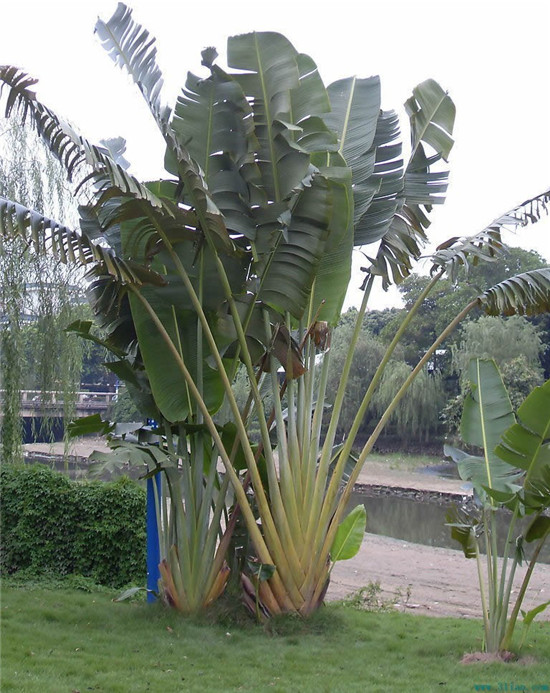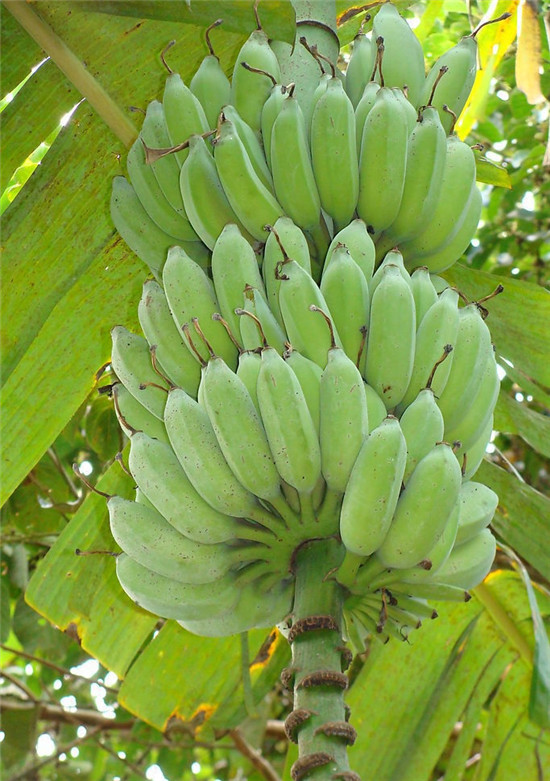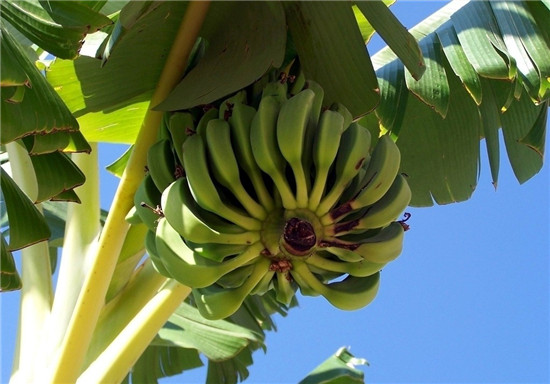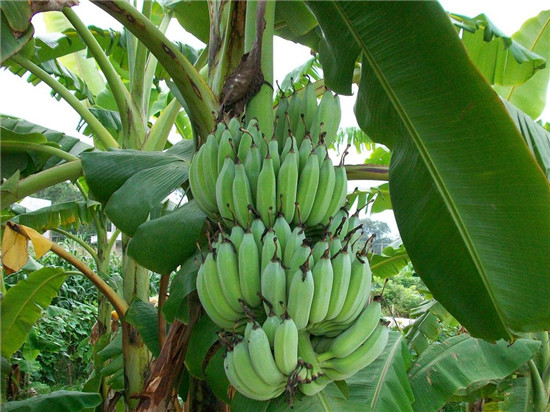What are the differences between plantains and bananas?
Banana trees and banana trees are easy to make mistakes. Today, let's take a look at the difference between bananas and bananas.

Banana tree banana family, plantain genus. Large evergreen perennial vegetation. Stem to 3-4 m tall, unbranched, tufted. The leaf is large, up to 3 meters long and 40 meters wide, showing a long oval shape, with thick main veins, parallel veins on both sides, light green on the leaf surface and pink-white on the back. In summer, large yellowish flowers are drawn from the leaves. "Fu Shu is like a tree, but the quality is not wood, and the shade is high and comfortable." it is the previous image description of the shape, quality, and appearance of plantains.
Morphological characteristics of plantain trees: tall herbs, solitary and unbranched, bearing one or more fruits. Leaves spirally arranged, with thick middle ribs and many pinnate parallel veins; young leaves are reel-shaped when budding. Flowers usually unisexual, occasionally bisexual, clustered in 1 or 2 rows in colored bracts. Inflorescences erect, pendulous or semi-pendulous. The male flowers are borne in the upper bracts and the female flowers (occasionally bisexual flowers) in the lower bracts.

The connate perianth segment is located in the outer whorl, the apex is 5 (3-toothed) or 3-parted into a strip, there is a lobule or no lobule on each side of the middle lobe, and the lateral teeth or teeth have appendages or none. The free perianth segment is located in the inner whorl, oblong to suborbicular, entire or caudate or 3-pointed. In the latter case, the bilateral lobes are nearly rounded and the middle lobes are narrow and long-pointed.
Banana tree growth habits: sexual warmth and cold tolerance is weak, stem meristematic ability is strong, tolerance to semi-shade, strong adaptability, fast growth rate.
The method of propagation of banana trees: propagate by individual plants. When the banana leaves wither at the end of autumn, cut off the withered leaves and protect the roots. The residual stem is wrapped up from the base of the stem with straw. The straw will be released in early April of the following year, and when many young plants grow on the roots, it is feasible to propagate separately. When transplanting, organic fertilizer was applied to the pit as the base fertilizer.

Banana trees and banana trees both belong to the genus plantain of the banana family, and their color, aroma, taste and shape are very similar. There is almost no difference in tree shape, leaves and height. To distinguish them, we can only start from the shape, color and taste of the fruit. From the appearance, the banana is curved in the shape of a crescent moon, with a short stalk and 5-6 edges on the pericarp. The plantains are thinner at both ends, thicker in the middle, slightly flat on one side and slightly curved on the other, showing a "round and deficient shape". The fruit stalk is longer and there are 3 edges on the pericarp.
In terms of color, the banana is turquoise when it is not ripe, turns yellow when it is ripe, with brown spots, the flesh is yellow-white, and the cross section is nearly round. The peel of plantain is grayish yellow, there are no spots after ripening, the flesh is milky white, and the cross section is flat and round. Judging from the taste, the banana is full-bodied and sweet. The plantain tastes sweet, but it has a sour aftertaste.

In addition: banana trees are relatively "short and fat", with broad leaves and stout stems. Leaves and stems are bluish green and covered with white frost. Banana trees are relatively "thin and tall", with narrower leaves, thinner stems, yellowish green leaves and stems, and no frost.
These are all the contents of the differences between plantains and bananas that I have summarized for you. I hope this article can help you. Please continue to follow us.
Related
- Wuhan Hospital Iron Tree Blooming Result Was Instantly Frightened by the Gardener Master
- Which variety of camellia is the most fragrant and best? Which one do you like best?
- What is the small blue coat, the breeding methods and matters needing attention of the succulent plant
- Dormancy time and maintenance management of succulent plants during dormancy
- Minas succulent how to raise, Minas succulent plant pictures
- What are the varieties of winter succulent plants
- How to raise succulent plants in twelve rolls? let's take a look at some experience of breeding twelve rolls.
- Attention should be paid to water control for succulent plants during dormant period (winter and summer)
- Watering experience of twelve rolls of succulent plants
- Techniques for fertilizing succulent plants. An article will let you know how to fertilize succulent plants.



